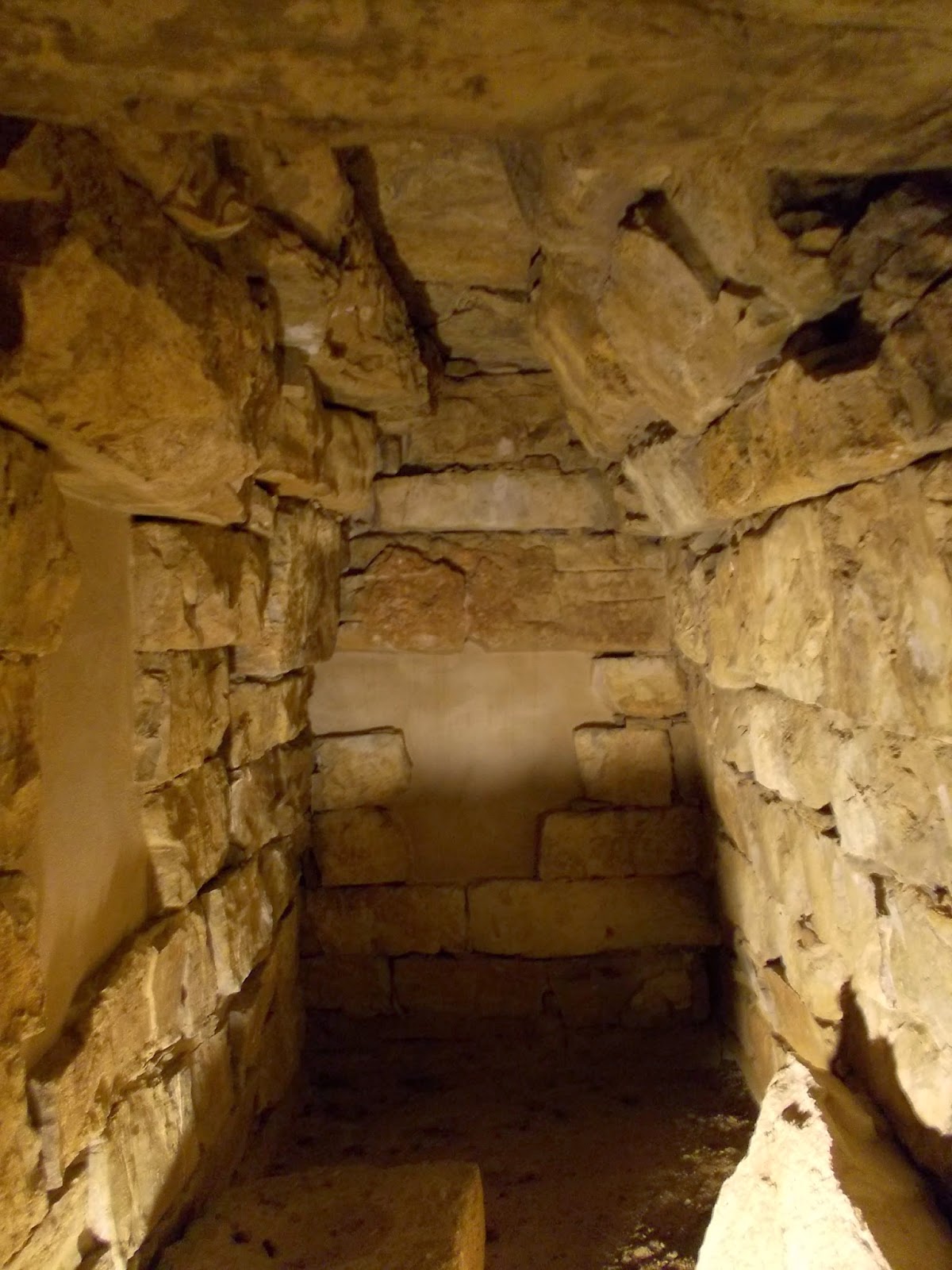Renaissance Florence and the Etruscan Tomb
Take a walk with me to visit one of the Etruscan Tombs that make up the history of Florence.
This Etruscan tomb, named the Tomb of the Montagnola, consists of an artificial mound of earth of about 70 meters in diameter. Discovered in 1959, it dates back to the mid-seventh century B.C. and is located at the outskirts of the city of Florence.
Here we are approaching the entrance.
Look at the approach to the door of the tomb, those huge slabs of rock at the left, somehow hand cut and placed one above the other, form the entrance way.
Clay, softened and thick, was the only mortar used
to keep these stones in place.
This is what we saw beyond that small iron door at the entrance.
The structure of the Barrow or mound consists of an external corridor, an internal vestibule with two lateral cells and a final circular chamber with a dome-shaped roof and central pillar.
This is the vestibule or main corridor. To the left and right are the two small chambers and ahead, beyond the passage in the center is the circular chamber.
Notice the ceiling and the placing of the stones that form the roof. They are in an inverted V shape and remind us of the engineering feit achieved by Brunelleschi when he built the dome of the cathderal in Florence. The blocks of stone, at times a few meters wide, were arranged in overlapping rows up to the top of the construction ending in an acute arch.
I couldn't help but admire the warm, golden color of the rough stones which were carved from nearby Monte Morello.
This is the the small chamber to the left of the main corridor.
Again note the amber tones of the rocks and the huge blocks that were used.
This is the small chamber to the right.
Here is the circular chamber with its central pillar that doesn't touch the ceiling but stops just a few inches before.
Again, look at the amazing circular placement of the stones on walls and ceiling.
There was a sense of quiet and peace within the walls of this tomb.
Amazement at the simplicity of the structure. .
..
wondering at the people who dwelled within.







